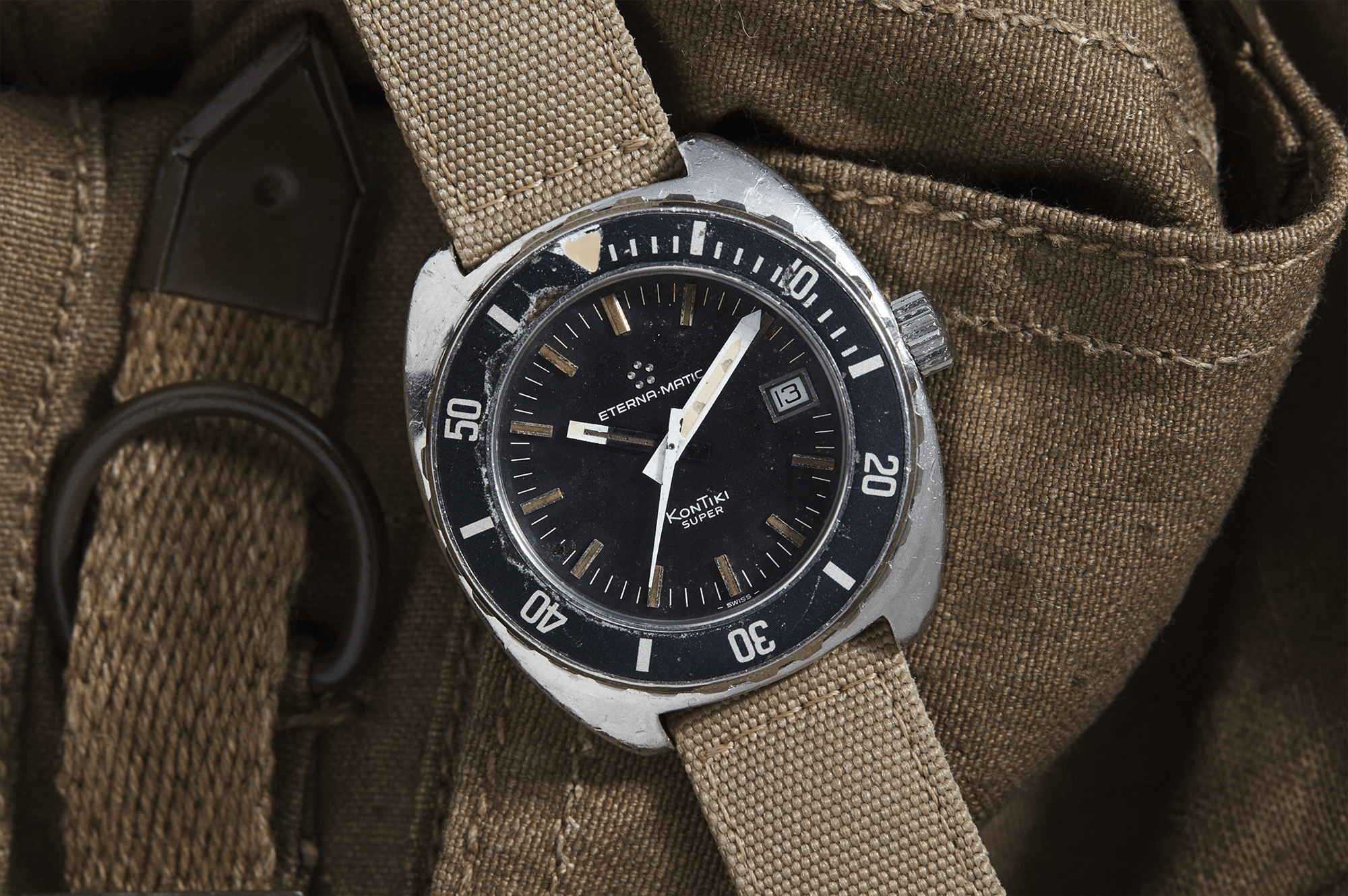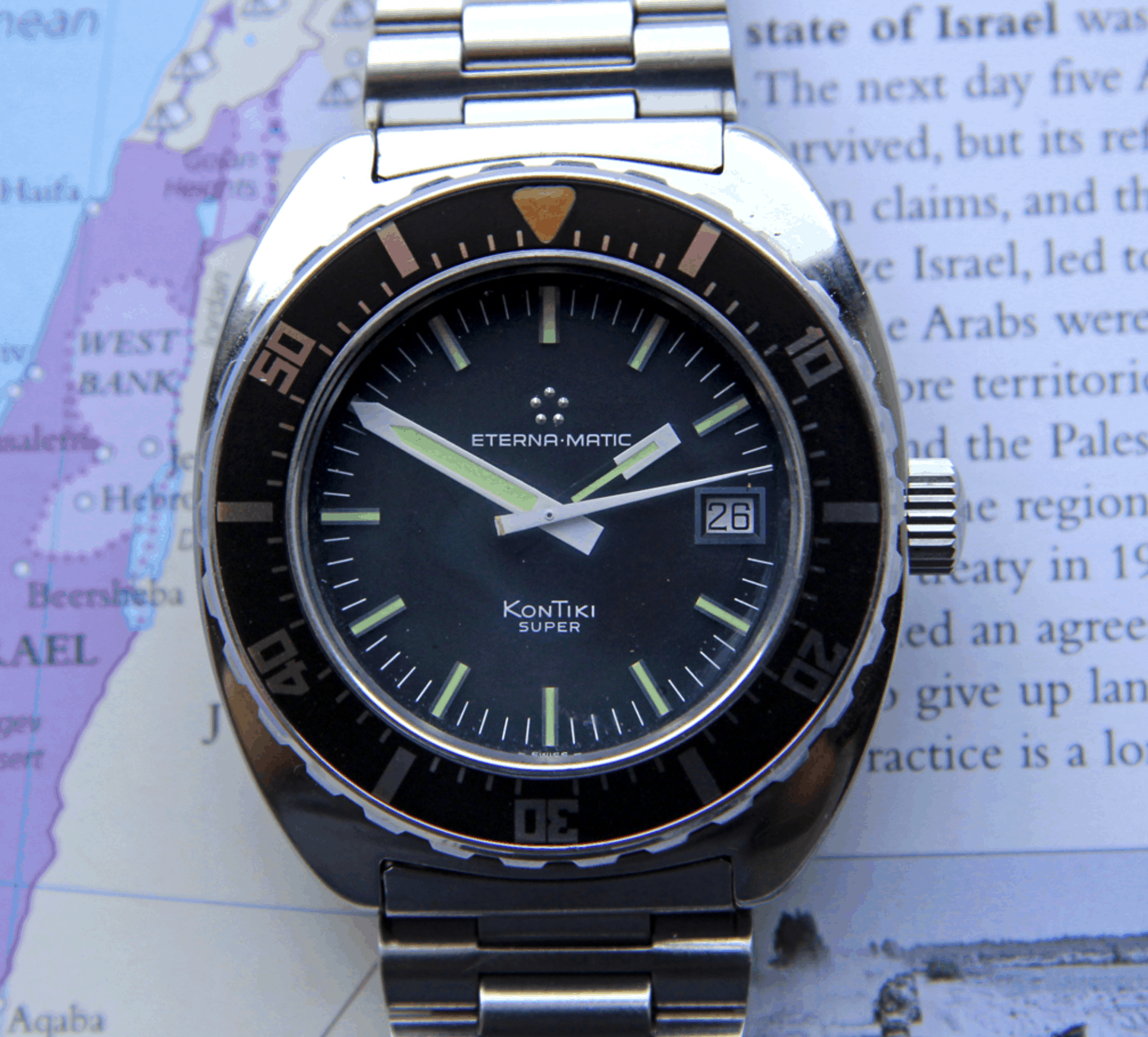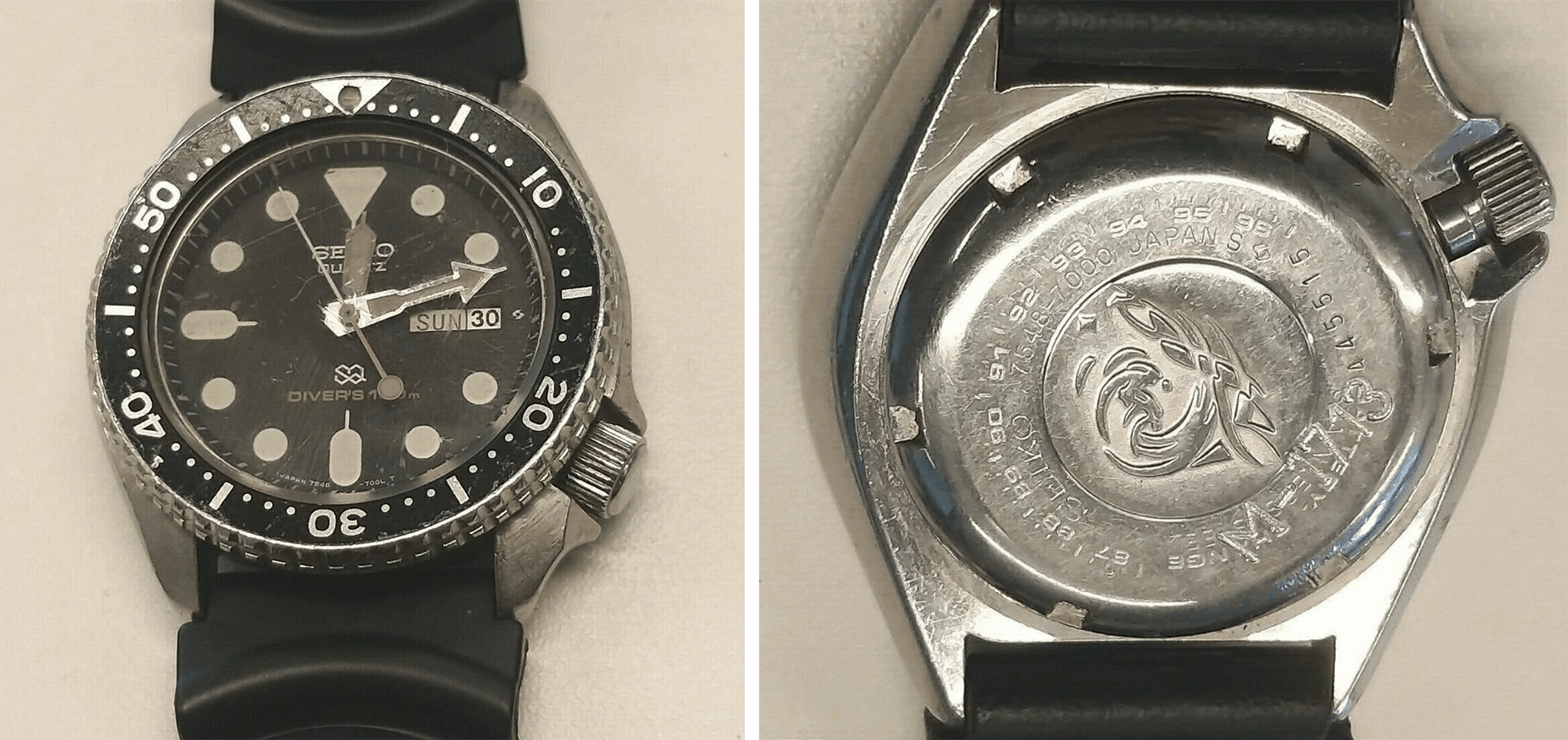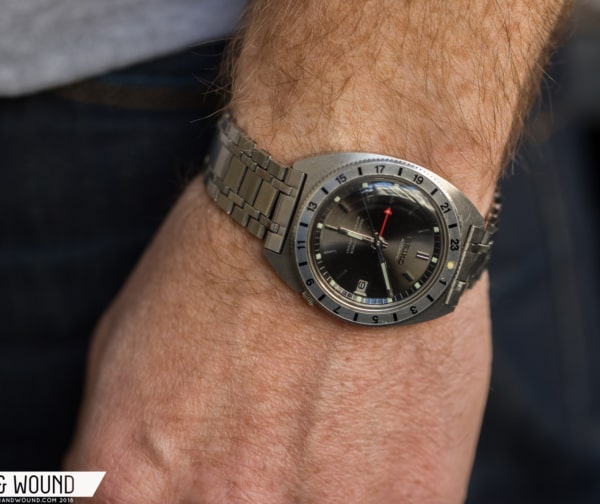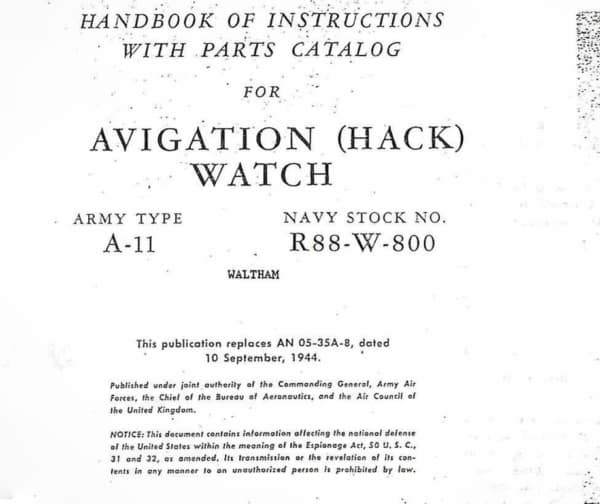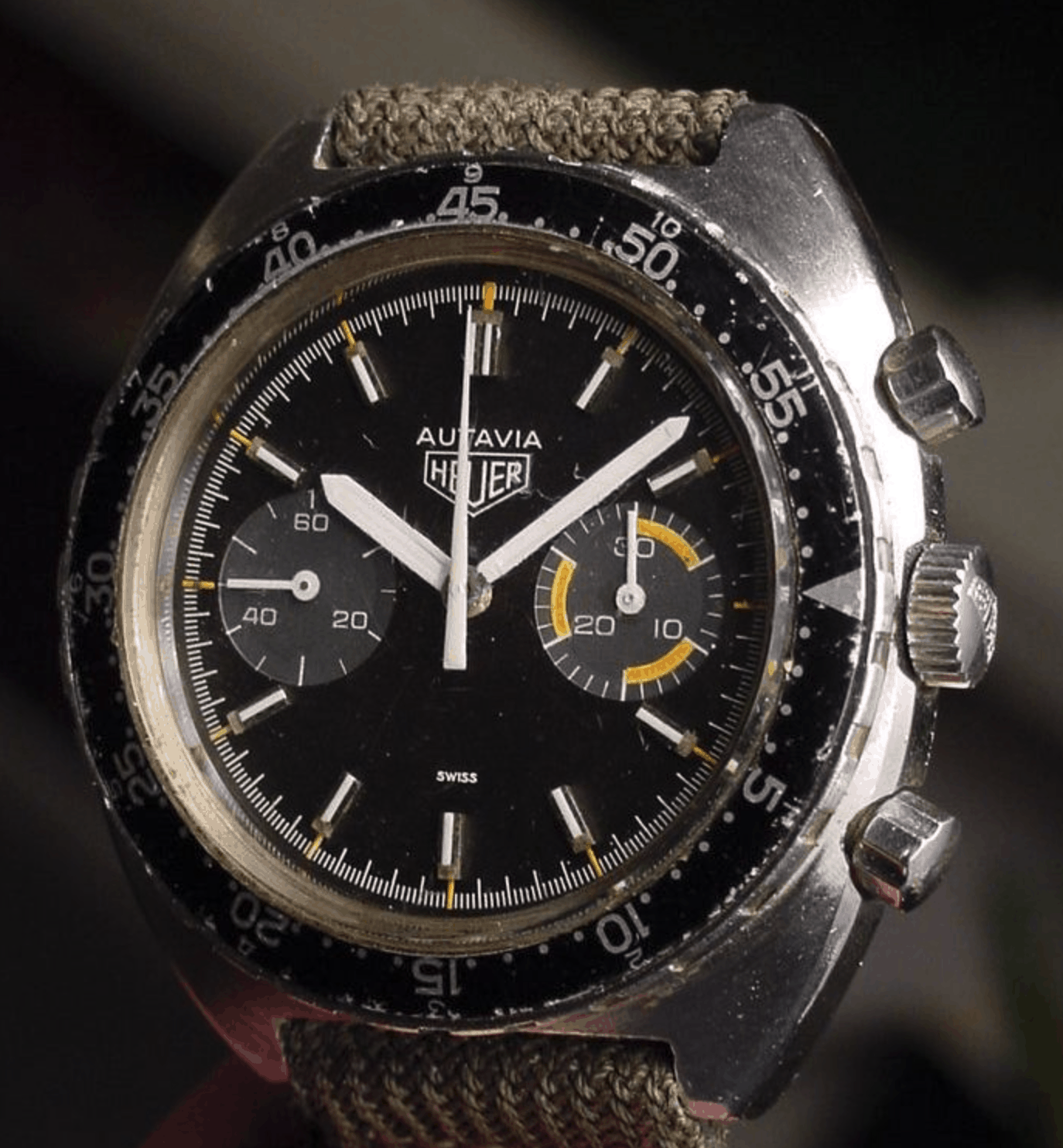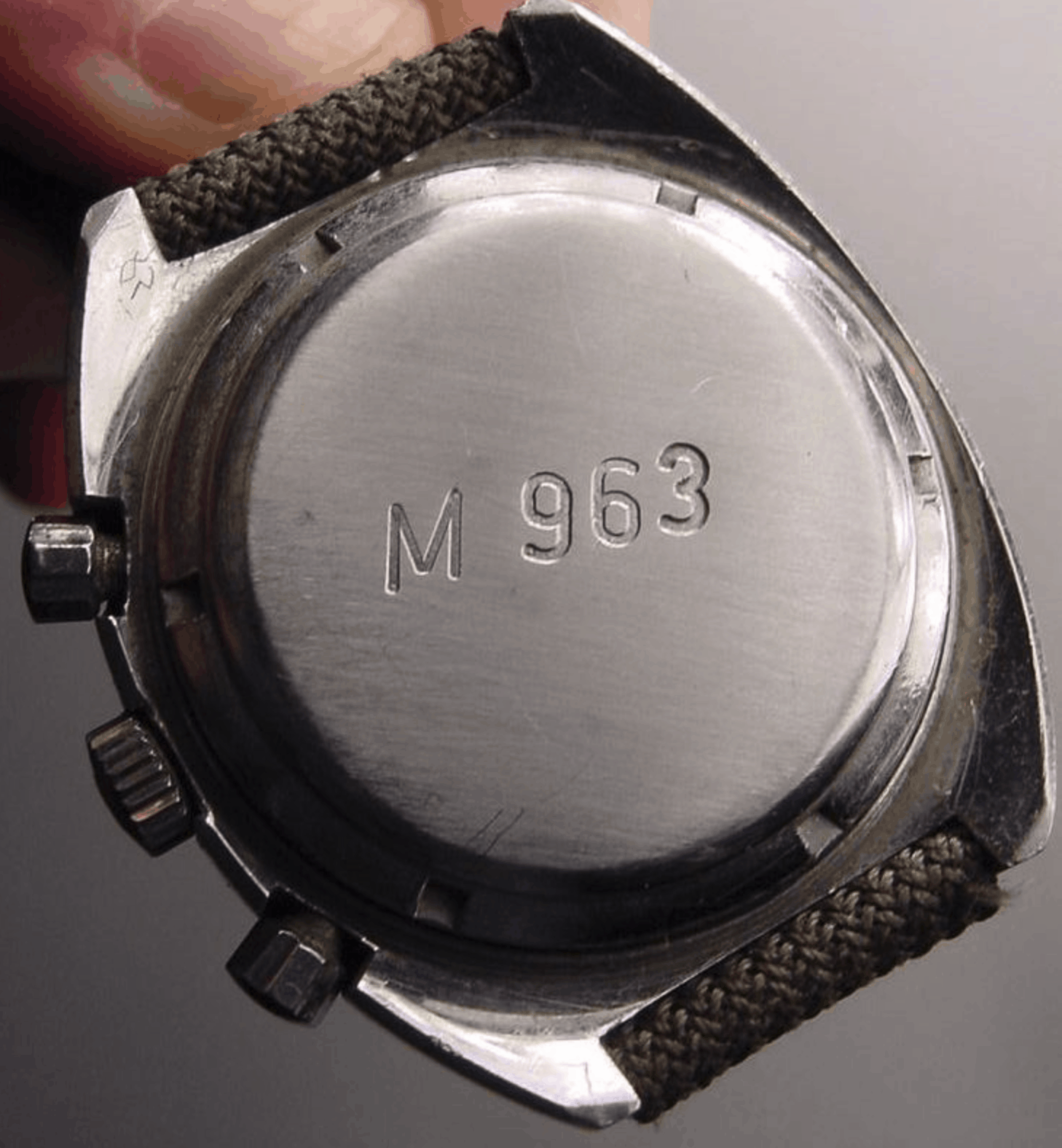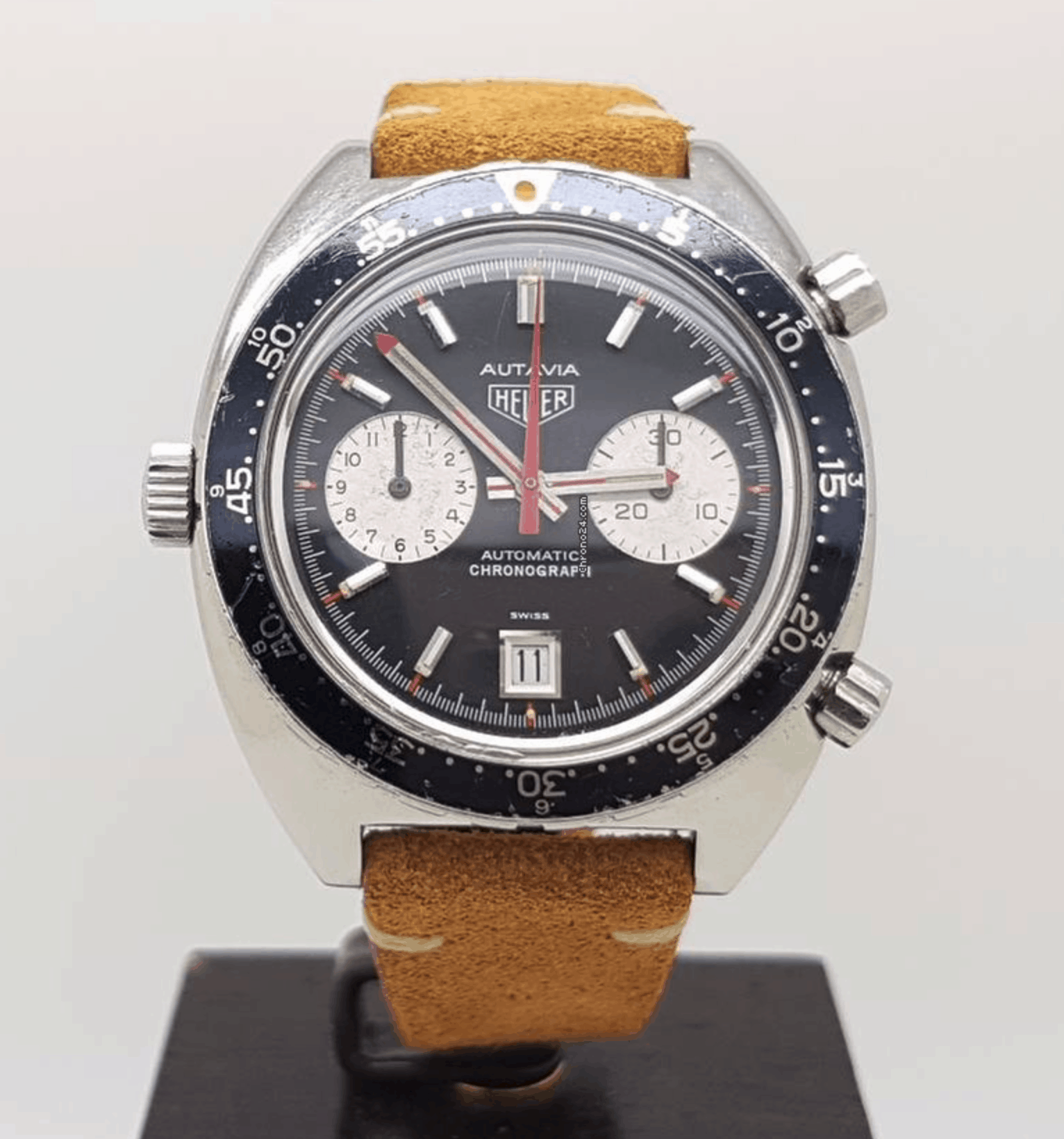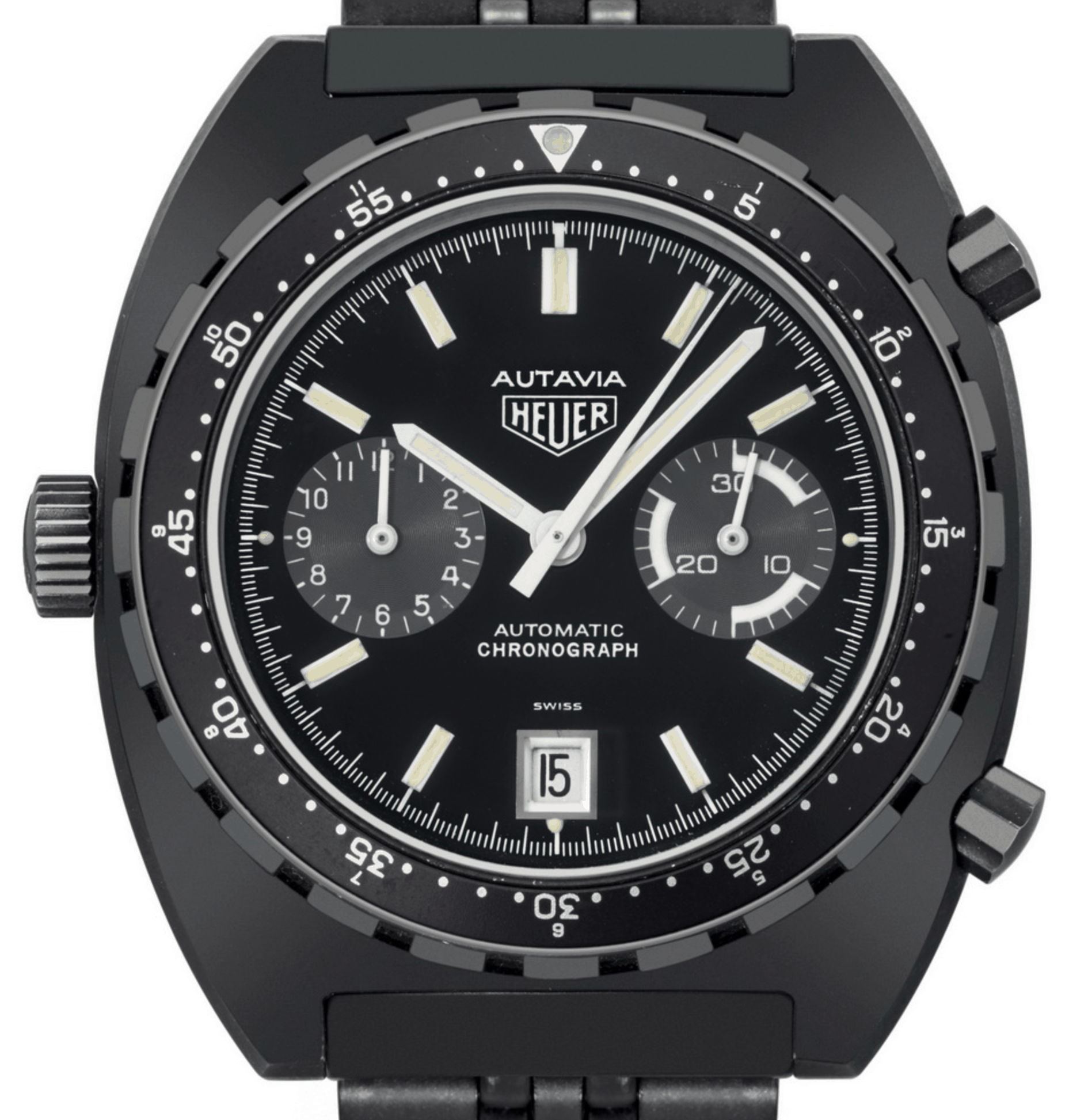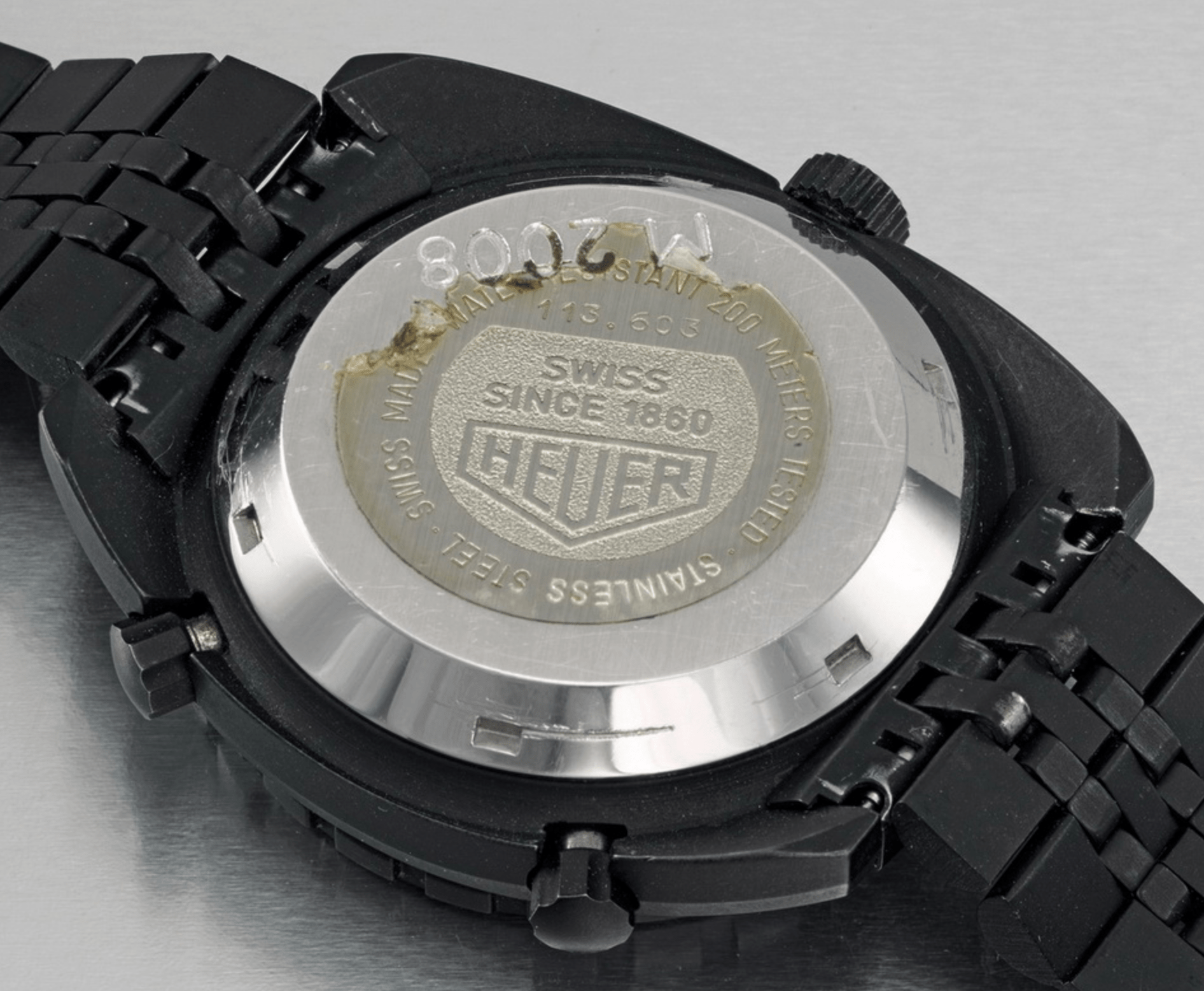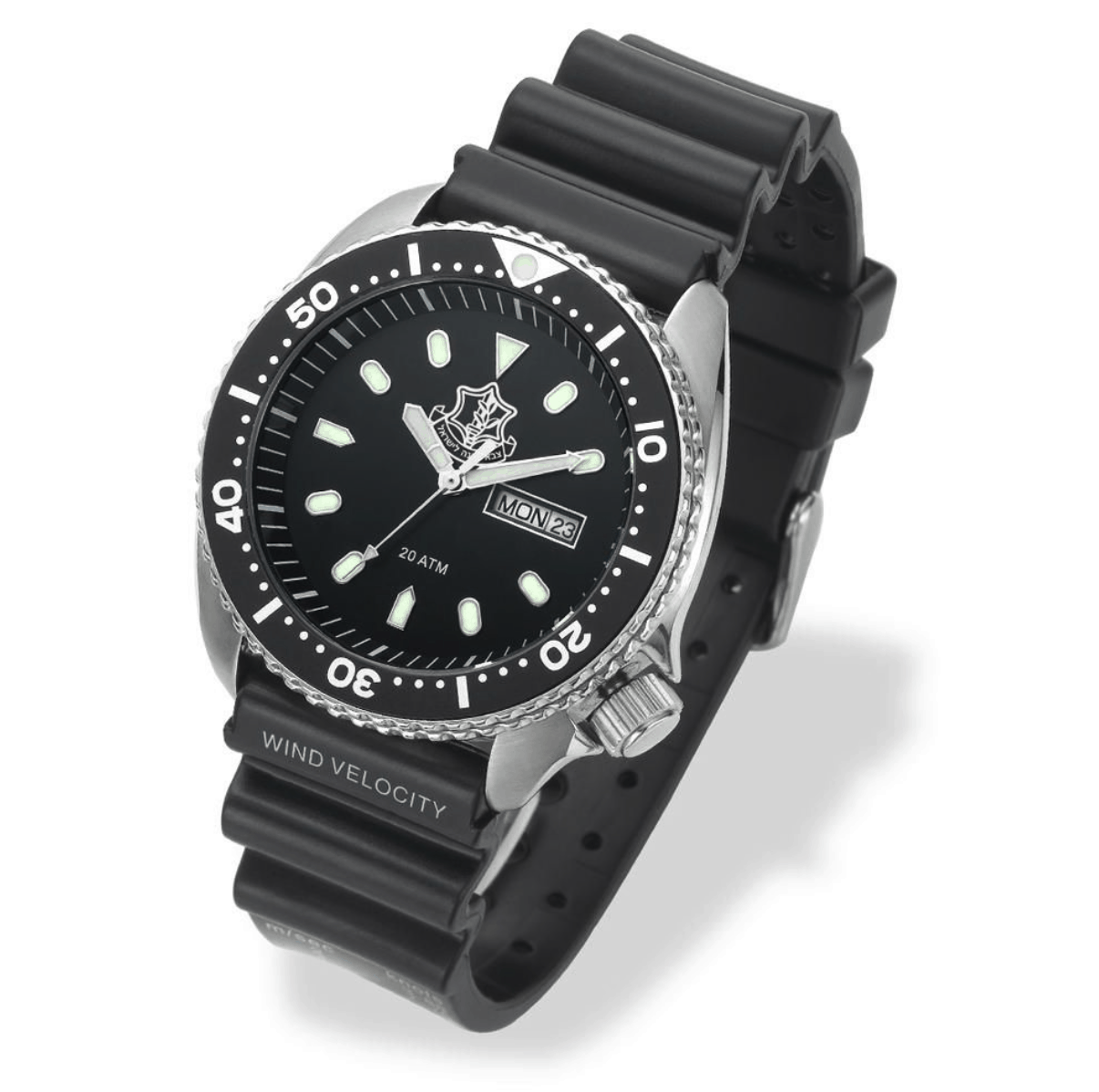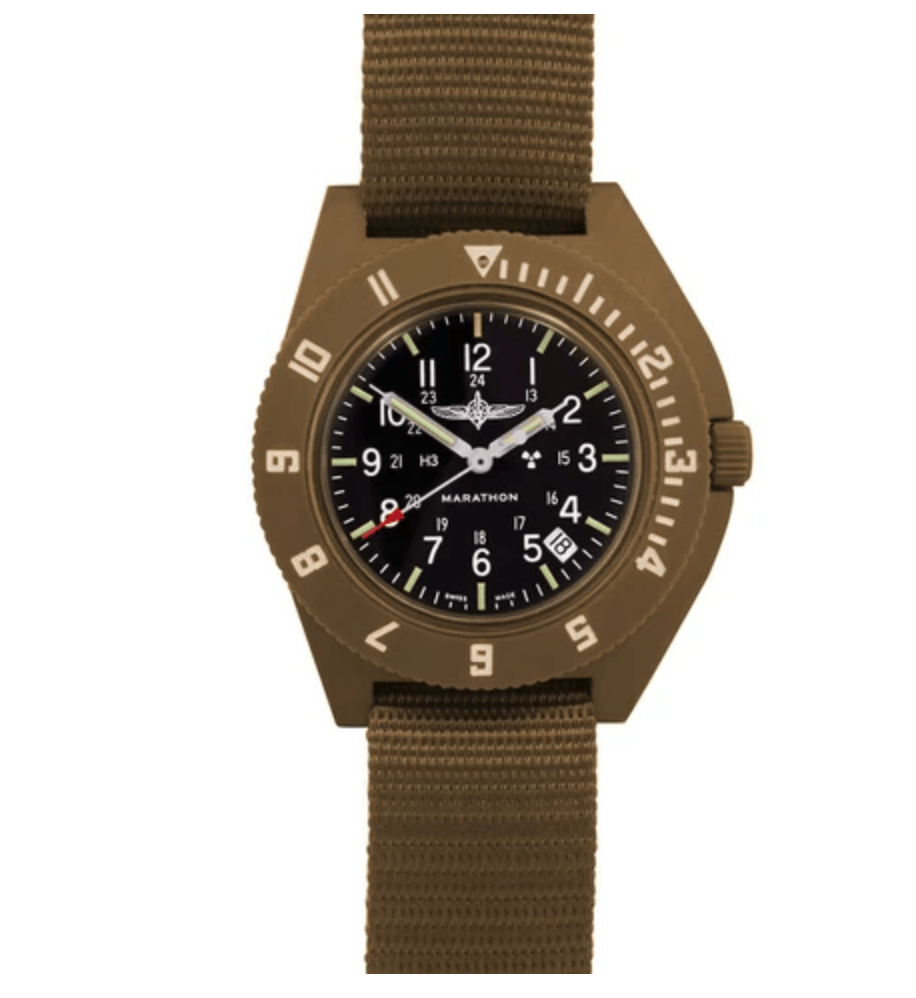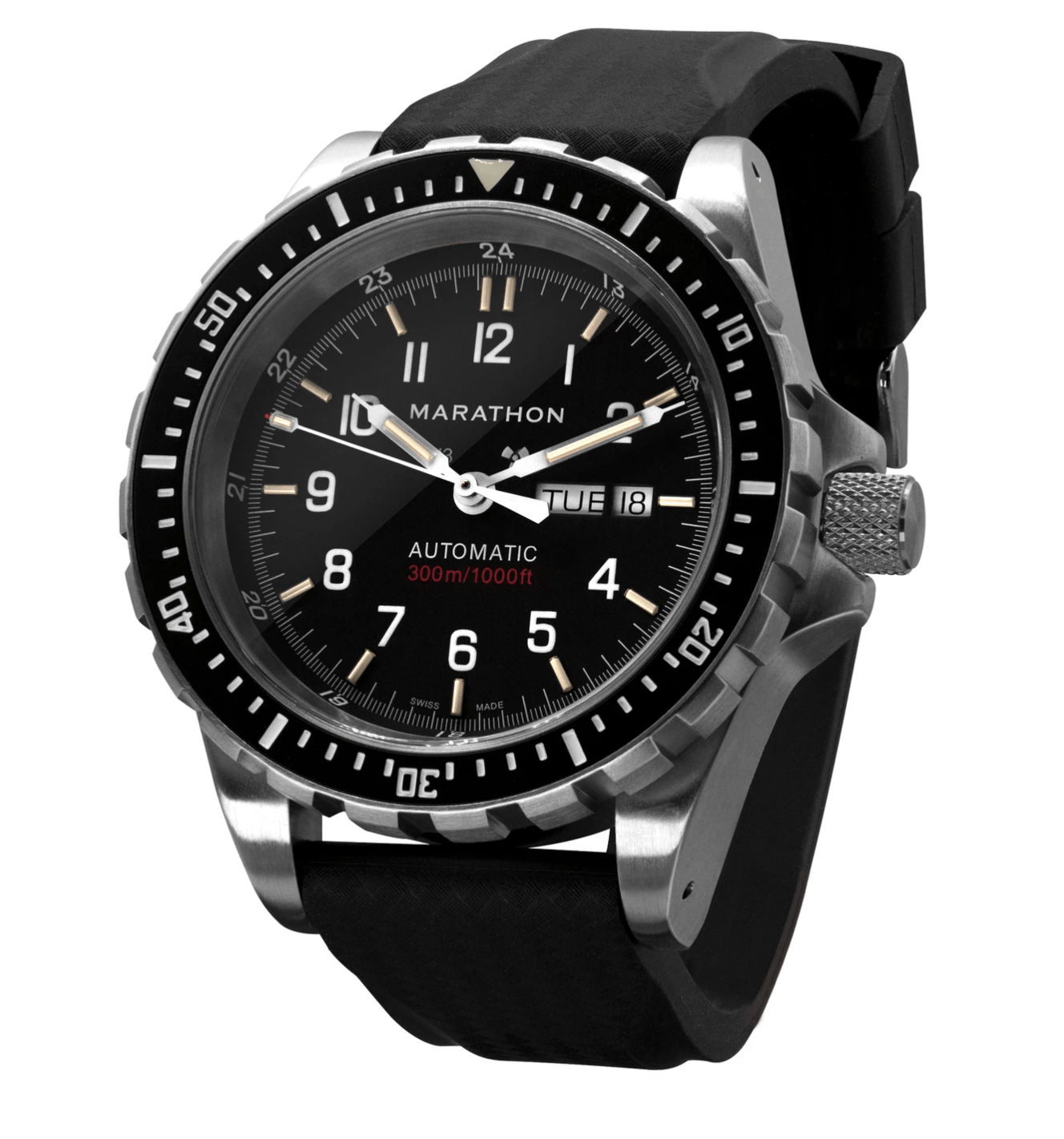Again, however, Duvdevan operates undercover in Arab communities and not as a conventional field unit, and as telegraphing one’s identity as an IDF soldier via a unit logo on one’s watch can hardly be considered good operational doctrine, we can safely assume that these watches are not, in fact, used during operations.
![]()
One other watch made by Marathon is notable: the Jumbo Diver’s Automatic (aka JDD, or Jumbo Day Date). Housed in a whopping 46mm case, this oversized automatic diver powered by the ETA 2836 features a black dial, day-date display, tritium tube illumination, unidirectional dive bezel, oversized, knurled screw-down crown, and a rubber dive strap. One particular variant of this watch is not in fact issued to Shaytet 13, but rather, adorned with the unit insignia of the Ya’Mam (yechida merkazit meuchedet, or “central specialized unit”), a special counter-terror unit within the Isreli border police. Given the watch’s price point (retail is $1,800) and analog display, this is another instance in which the author surmises that these watches may have been gifted/awarded to Ya’mam operatives, but are not in fact regularly issued or used during operations. Inexpensive, highly legible and accurate digital watches are the name of the game these days in almost all branches of most of the world’s armies, the IDF included.
Though the G-Shock or similar rugged, digital watches are the de-facto timepieces of combat soldiers within the IDF, recent advances in smartwatch technology seem to indicate a future in which commanders, perhaps down to the squad level, are issued connected wearables to monitor vital signs, send and receive intelligence, and navigate terrain. In an age in which even the most basic smartwatch is stunningly sophisticated and capable of providing GPS, health monitoring, and more, it seems highly likely that the bulky, barely man-portable communications systems of the past several decades will slowly be supplanted by smaller, more portable systems.
As miniaturization and Moore’s Law take hold, perhaps we’ll finally be in a position to rid ourselves of 30- or 40kg loads and transfer most of this work to small, wrist-borne devices that are more efficient, less expensive, and easier on our backs. Such wrist-born wearables may lack the caché of a beautifully patinated Tudor Submariner, but time — as the old saying goes — waits for no man.
Note: The author wishes to thank Akiva Gothelf of Gothelf A. Watches in Tel Aviv, Israel and Jeff Stein of On The Dash for their help in researching this article.
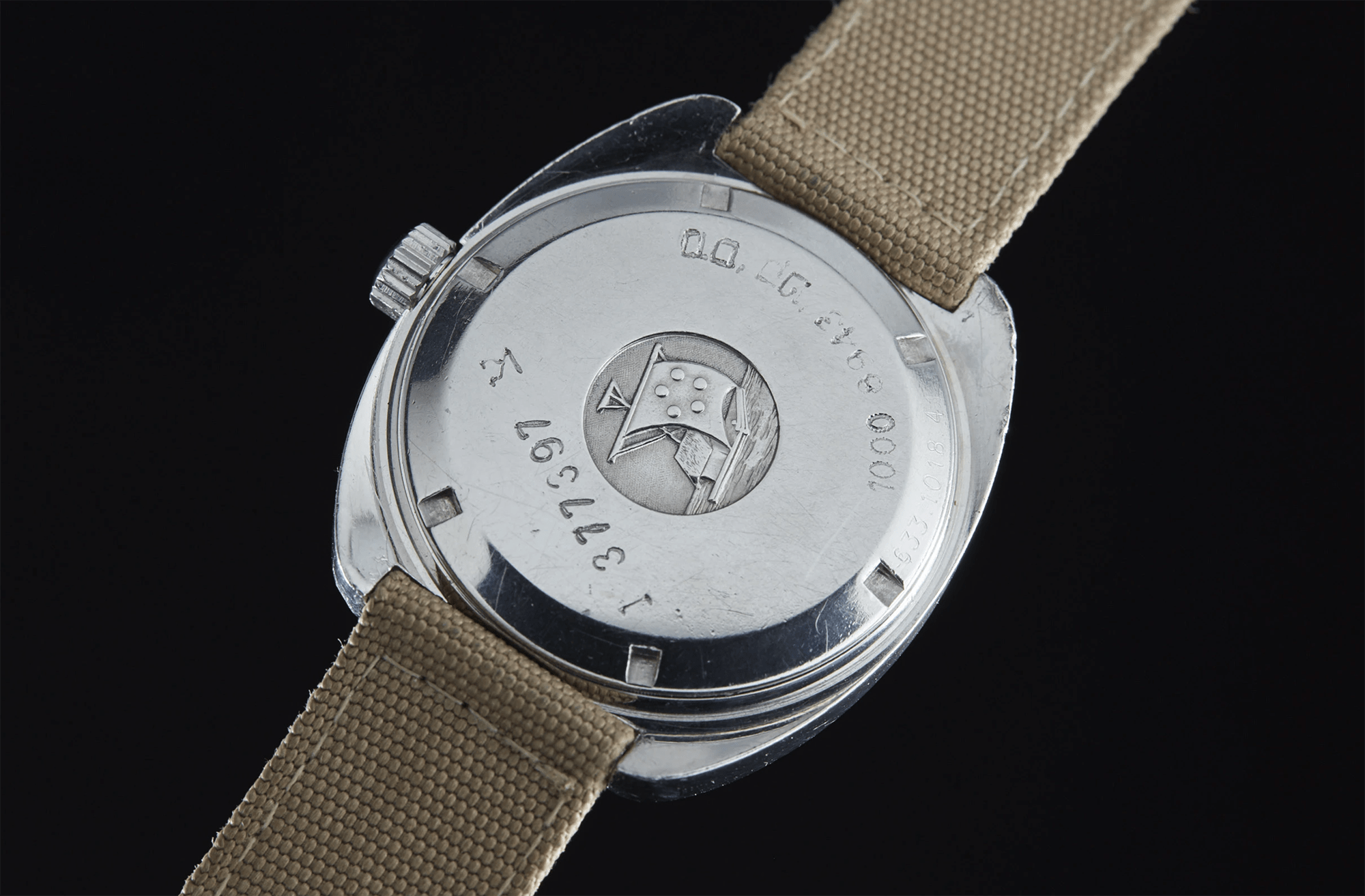









 Featured Videos
Featured Videos




